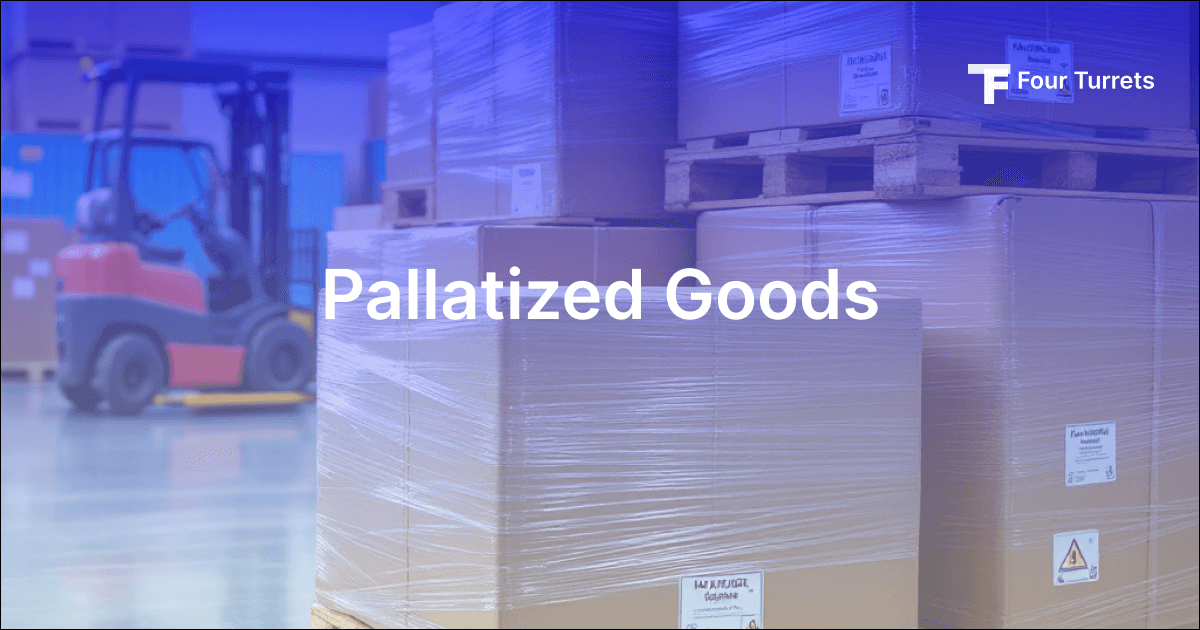Mastering Palletized Shipping: Your Guide to Efficient Freight Transport
Efficiency and safety are primary objective in the world of supply chains these days. One of the most fundamental methods for achieving both is through palletized shipping. This process involves securing goods onto a shipping pallet before transport, a crucial step for ensuring products move safely and securely from origin to destination. Whether you’re managing a warehouse or coordinating freight movements, understanding palletizing is key.
But what exactly is palletized shipping and why is it so widely used? Let’s dive in.
What is Palletized Shipping?
Palletized shipping, often referred to as palletized freight, is the method of loading goods or containers onto pallets (sturdy, flat transport structures) and shipping them securely via shipping container. This approach standardizes units for handling and transport, making the movement of cargo significantly easier.
It’s a cornerstone of modern supply chains, contrasting with floor loading where items are placed directly onto the transport vehicle’s floor Using pallets transforms loose items into a single, stable unit load.
The Advantages of Using Pallets for Shipping Process
Opting for a palletized shipment offers numerous advantages over non-palletized methods:
- Enhanced Efficiency: Pallets streamline handling. Forklifts and pallet jacks can move large quantities of goods quickly, significantly speeding up loading and unloading times in a warehouse and during transit.
- Improved Safety & Security: Properly palletized goods are secured, reducing the risk of damage during handling and transport This minimizes product loss and associated costs.
- Cost-effective: While there’s an initial step of preparing the palletized cargo, the reduction in handling time, labour costs, and potential cargo damage often leads to overall shipping costs saving.
- Better Space Utilization: Standardized pallet sizes allow for efficient stacking and storage within warehouses and transport vehicles, maximizing space.
- Streamlined Tracking: A single pallet represents one trackable unit, simplifying inventory management and tracking compared to numerous individual items.
Many businesses, including fulfilment centres handling diverse client needs, rely on palletized shipping for bulk movements It’s a key component in ensuring projects run smoothly, especially when coordinating between suppliers, warehouses, and final destinations The benefits are clear when moving freight Key Considerations for Palletizing Cargo
Effective palletizing involves more than just placing boxes on a pallet. Key considerations include:
- Choosing the Right Pallet: Select a pallet (wood, plastic, metal) strong enough for the load and compliant with any specific shipping regulations (e.g., ISPM 15 for international wood pallets).
- Stacking Pattern: Arrange boxes in an interlocking pattern for stability. Keep the stack within the pallet dimensions and ensure weight is distributed evenly.
- Securing the palletized Load: Use stretch wrap, banding, or strapping to secure the items tightly to the pallet, creating a single, solid unit. Corner boards can add extra protection and stability.
- Labelling: Clearly label the pallet with shipping information, handling instructions, and any required regulatory labels.
Non-Palletized vs. Palletized Freight
While pallet transport is often preferred, floor loading (non-palletized) might be chosen for oversized items that don’t fit standard pallets or to maximize space for certain types of durable goods However, floor loading typically requires more manual labour and carries a higher risk of damage. The choice between floor loading and palletizing depends on the specific nature of the cargo, handling equipment available, and cost-benefit analysis Conclusion
Palletized shipping is a foundational practice in modern logistics, offering significant benefits in efficiency, safety, and cost-effectiveness for moving freight. By standardizing cargo into manageable units, using pallets simplifies handling in the warehouse and throughout the shipping process, Understanding how to properly prepare a palletized shipment ensures your goods arrive securely and your supply chain operates smoothly.



